Kudzu, an invasive but medicinal plant, . . . Benzodiazepine withdrawal Syndrome -> histamine excess, Pomegranate, St. John's Wort, Kudzu & BDNF
Mother Nature has solutions for us. Some of them grow invasively, many in fact, of the medicinal herbs/foods are easy to grow plants that are invasive in many areas.
I was asked about what I thought or might do about benzodiazepine withdrawal.
Benzos act on the body in a way that is similar to alcoholism. Withdrawal from benzos may involve Retinoid Toxicity and histamine excess which can have a wide range of symptoms that seem unrelated to each other.
Summary points:
Magnesium topically would likely help - Epsom salt soaks, 20 minutes in a bath every 5-7 days, or 40 minutes in a soak with lower legs & feet.
Electrolyte balance - potassium intake in balance with sodium and calcium and magnesium is needed for preventing muscle cramps, tinnitus, or anxiety or irritability.
If queasy and hydration is at risk, Pedialyte products have the magnesium in balance - popsicles or sipping a beverage might help calm the stomach and prevent worse symptoms of pain or muscle cramps.
Pure Maple Syrup in water has magnesium in balance with other trace minerals too.
Recipe: 1/4 cup Pure Maple Syrup per liter of water, limit to once or twice a day for an adult. Manganese content is excellent, making it a risk of overdoing intake if used excessively.
Pomegranate products and flush niacin would likely help reduce inflammation and with restoring butyrate producing species in the gut microbiome. Good butter is a source of butyrate which would help too, a comment from Rick Tapani, thanks! 😊 Reducing stress is also important, good sleep, sunshine and circadian cycle support.
GABA and glutamate receptor activity is changed from chronic use of a depressant and that adds risk of seizures with rapid withdrawal, so gradually discontinuing use is important. This post gets into detail about how St. John’s Wort might help with GABA receptor function and Kudzu vine may help with other aspects of benzodiazepine, alcohol, or opiate abuse or withdrawal. Kudzu also helps promote BDNF, so this post has become part of the BDNF series.
Avoiding glutamate and histamine dietary sources might help avoid some negative symptoms during withdrawal. (Glutamate food sources, Brave Summary) (Histamine food sources, Brave summary)
Heavy metal toxicity is included as a potential risk for worse symptoms during withdrawal.
Deep breathing and other mindfulness techniques might help with rebalancing brain activity and receptor activity.
Benzodiazepine withdrawal can involve reduced GABA - calming messages within the brain - and overactivity of excitatory glutamate receptors
GABA receptors likely became affected from long term use of benzodiazepines, so withdrawal leaves the body set at a rate that is adjusted to chronic-use level of receptor activity - over supply of signaling chemicals. Time will be needed for the receptors to be readjusted to a normal level of activity - the normal level of signaling chemicals. See excerpt below for more details. From a reader share and request for my thoughts regarding benzodiazepine withdrawal. (Ashton, 1991) Background experience - I have seen what a combination of alcohol and benzo use can do to someone and the difficulty during withdrawal. I have not worked with benzo withdrawal alone.
Mental coping as a To-Do list item:
Life can seem duller without dopamine stimulation from an external substance. Take a walk, sing a song, paint a picture, phone a friend, garden or stare at nature in some form - a goldfish bowl, volunteer at a pet shelter. We can learn to have a variety of methods for increasing our reward and affection brain chemicals. Pull invasive plants, or harvest some of the edible ones like kudzu leaves, flowers and potato like roots.
Magnesium and sulfate:
The Epsom salt bath is soothing from a relaxing mindfulness perspective and by providing magnesium and bioactive sulfate through skin pores and at the nail beds and mucous membranes of the body.
Summary of benefits of kudzu for benzo withdrawal
Kudzu phytonutrients function similarly to Naltrexone and may help with withdrawal from opiates, alcohol or benzodiazepines, (Ozarowski, et al., 2013), or it may help with reducing the amount of alcohol that is consumed - reducing the preference or ‘need’ for more to achieve the same level of effect. (practicalrecovery.com; bbc.co.uk)
Summary of benefits of St. John’s Wort for benzo withdrawal
St. John’s Wort may help rebalance GABA receptor activity, which chronic use of benzodiazepines likely modified towards reduced activity. It can also increase breakdown of some drugs.
“Thus, the actions of benzodiazepines include not only enhancement of GABA activity at many brain sites but also decreased release of acetylcholine, noradrenaline, dopamine and serotonin (Haefely, Pieri, Pole, & Schaffer, 1981). […] Any chronically used drug gradually engenders a series of homeostatic responses which tend to restore normal function despite the presence of the drug. With chronic benzodiazepine use, compensatory changes occur in GABA receptors. Such changes consist of decreased sensitivity of these receptors to GABA, probably as a result of alterations in affinity state and decreased density (Cowan & Nutt, 1982; Nutt, 1986). In addition, there are changes in the secondary systems controlled by GABA, so that the output of excitatory neurotransmitters tends to be restored, and/or the sensitivity of their receptors increases. The whole complex of primary and secondary changes eventually results in benzodiazepine tolerance.” (Ashton, 1991)
Histamine excess and Mast Cell Overactivity Syndrome (MCAS) may be a problem
So it might help to avoid histamine sources in the diet and flickering lights (strobe lights, action movies, driving at night with oncoming traffic headlights) which also degranulate mast cells. Niacin, butyrate, pomegranate peel and other Nrf2 promoting herbals or foods can also inhibit mast cell degranulation.
Histamine excess and food intolerances that are not standard ‘food allergies’ is a reported problem with benzo withdrawal, but the reason is not well-understood — hyperventilation was mentioned in the paper by Ashton, 1991. My theory is that it is related to retinoids being overactivated similarly to that seen in alcohol abuse, but I didn’t find more information on that topic - and this post got plenty long without more tangents. (Histamine food sources, Brave summary)
Glycine can be a calming and helpful amino acid for brain and gut health, and meat or bone broth are trendy ‘health foods’ now that are good sources of glycine. Both could be histamine trigger foods though. The longer cooking time of the bone broth would be worse than the shorter simmered meat stock.
Histamine release due to hyperventilating is mentioned in relation to increased reports of food intolerances that are negative for known allergies following benzodiazepine withdrawal. (Ashton, 1991)
Hyperventilating is likely during withdrawal due to changes within the body. (Ashton, 1991) Consciously working on slower deep breathing techniques might be helpful then.
“…Lum (1987) reports that hyperventilation provokes histamine release and that the incidence of food intolerance and pseudo-allergic reaction is high in chronic hyperventilators. The effect of benzodiazepine withdrawal on gastrointestinal function and on corticosteroid and immune responses (known to be affected by stress) perhaps merits further attention.” (Ashton, 1991)

GRADUALLY Withdrawing from Benzodiazepines is VERY important, as seizures are a risk from the GABA and glutamate receptor changes.
Symptoms of benzodiazepine withdrawal may include seizures from the changes to the activity of the GABA receptors and other types of receptors. The risk of neurotransmitter imbalance causing seizures is worse with rapid withdrawal than gradual withdrawal which allows the body some time to adjust to the lower stimulus level. (alternativetomeds.com)
Glutamate receptors are up-regulated, so avoiding glutamate dietary sources may be helpful.
Glutamate receptors are up-regulated in response to chronic use, (alternativetomeds.com), so avoiding large dietary loads of glutamates during withdrawal might help prevent some symptom extremes. Glutamate rich foods include tomatoes and cheese and spicy nacho flavored chips or nacho sauce. Also, Chinese takeout and any fermented foods would be sources of glutamate. Fermented foods and tomato also add to a histamine burden if excess is a causal factor. (Glutamate food sources, Brave Summary)
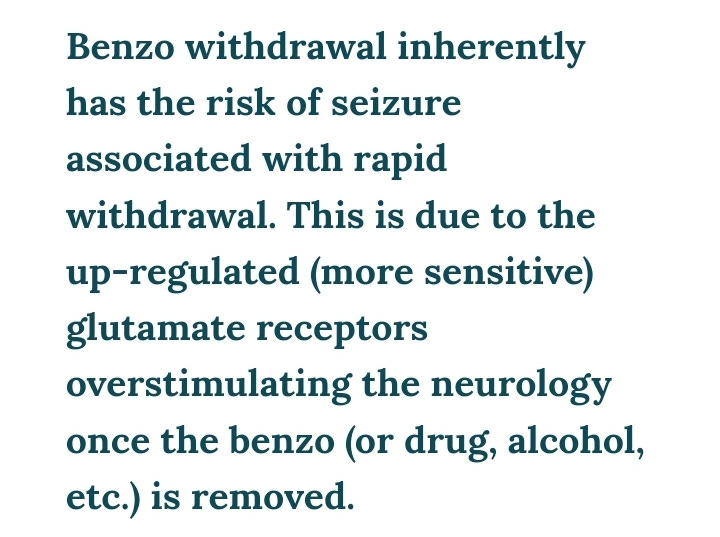
Glutamate is excitatory, while GABA is inhibitory. Benzodiazepine use or alcohol acts as a depressant on the system and the body compensates in chronic use by causing up-regulation of glutamate receptors and down-regulation of GABA receptors. (alternativetomeds.com)

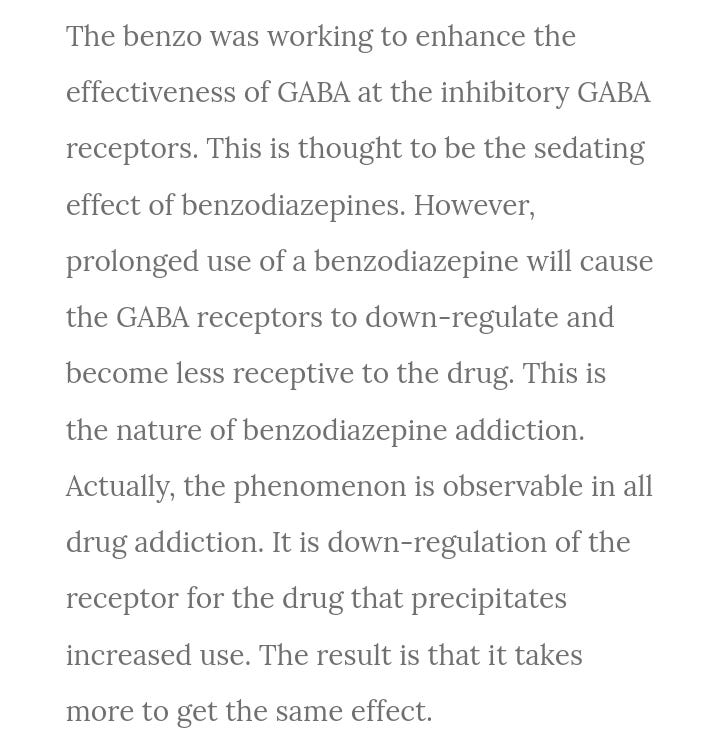
Heavy metal toxicity may be an exacerbating factor - pomegranate peel could help with that, and Epsom salt soaks may help by providing bioactive sulfate.
At AlternativeToMeds.com, they suggest heavy metal toxicity like mercury is part of the symptoms and recommend a chelation treatment. (alternativetomeds.com)
My thoughts:
Pomegranate peel helps the body remove heavy metals, it contains chelating phytonutrients. Discussed in the last post.
Methylation support nutrients would also help support detoxification of heavy metals.
Adequate protein helps support glutathione production, cysteine and methionine is needed along with glutamate, and Nrf2 promoting foods like omega 3 fatty acids and herbals.
Sulfur containing phytonutrients or Epsom salt baths also help with sulfation which is part of detox. Cruciferous veggies have sulfur rich phytonutrients which are also Nrf2 promoting.
Drinking adequate water is important for detoxification and not overeating or snacking all day and evening also helps. The body does better with ‘shift work’ - eating followed by ~ 4 hours to digest, then eat again, and have a 8-12 hour break from food during the night.
St. John's Wort might help modulate GABA receptor underactivity.
St John's Wort did help with opium withdrawal in an animal-based study - a reference used in this article, no Abstract available - Herbal detox - Benzodiazepine withdrawal treatment with the help of St. John's Wort? (Moeller, et al., 2019).
Hyperforin, a phytonutrient in St. John's Wort, (SJW), activate TRPC6 ion channels and that affects serotonin receptor activity. The number of serotonin (5-HT) receptors was increased in a study on rat brains when hyperforin was given. See excerpt below for more detail. (Klemow, et al., 2011)
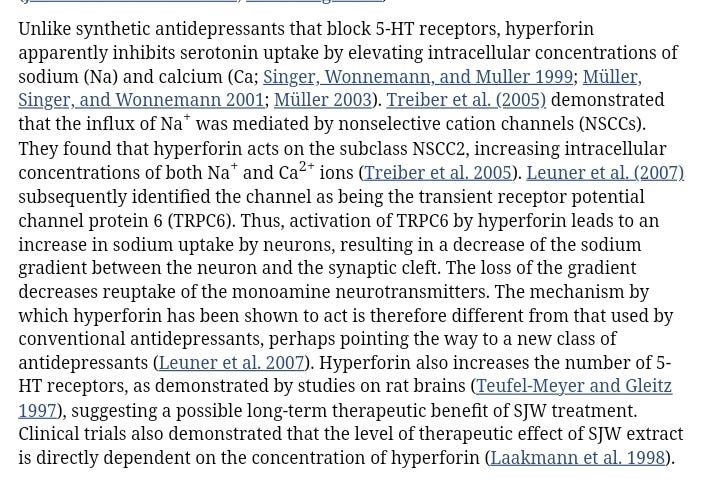
And St John's Wort induces expression of CYP 3A4 enzyme, (jamanetwork.com), which would increase breakdown of benzodiazepines (and other toxins) in the liver. (goodrx.com)
“St. John’s Wort induces CYP 3A4 and P-glycoprotein expression in vitro and in vivo.” (jamanetwork.com)
This standard medication used, flumazenil, is for during an overdose or current use of benzodiazepine rather than for managing withdrawal. (Benzodiazepine Toxicity)
Yes, alcohol withdrawal and benzodiazepine withdrawal has similarities. Brainy people use benzodiazepines to “aid” in alcohol withdrawal, but that has had the unfortunate side effect of benzodiazepine withdrawal later. And that tends to be worse than alcohol withdrawal. See excerpted screenshots below. (Bharathi, et al., 2021)
From a paper with an extensive list of research on different herbals that have been studied for use with alcohol withdrawal syndrome. (Bharathi, et al., 2021)
Combining alcohol and benzodiazepines is dangerous as they have additive effects on the body. Combined alcohol and benzodiazepine abuse can take passed out drunk to a new level of drooling comatose behavior. I could no longer get drunk person to get up and go to bed - but the benzos were kept a secret, so I didn’t know what had changed. Sleeping it off in the LazyBoy becomes an inevitability. It would take small construction equipment to move the passed-out person. Unfastening the overtight belt, though, is a mercy in my opinion, and medically helpful. #LifeLessons
That might seem taboo to discuss, however, passing out is a discussion that is needed. A neighbor had lost their young adult son to drunkenness. He passed out on a porch and his friends just left him there. He froze to death, if I remember correctly, rather than it being a medical emergency. I am not sure though.
The article by Bharathi, et al., 2021, is a treasure trove of research on herbs trialed for alcohol withdrawal syndrome, which to me seems like it would have similar problems as benzodiazepine withdrawal.
Hypericum, St John's Wort is mentioned in that paper, I think as Hypericumper foratum Hypericaceae. (Coskun et al., 2006, cited by Bharathi, et al., 2021)
Use of St. John’s Wort for alcohol withdrawal (animal-based study) decreased locomotor hyperactivity and stereotypical behavior [associated with alcohol withdrawal syndrome or a normal rodent?]. (Bharathi, et al., 2021)


BDNF was measured in a study with a different herb called Pueraria montana var Fabaceae. (Jiang et al., 2021, cited by Bharathi, et al., 2021) What is it? Kudzu vine….oh. We have no shortage of that in the southern states and elsewhere. It is a very invasive vine. Old cars and outbuildings can be lost under Kudzu vine. The rest of this post…. can be lost under Kudzu vine.

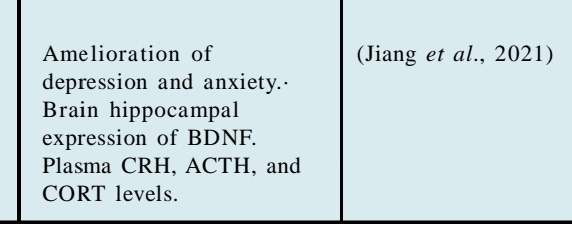
Pueraria montana var. lobata (Kudzu vine) root extract is an Nrf2 promoter. Which was observed in a study finding the extract inhibited photoaging on skin by promoting the Nrf2 pathway. (Heo, et al., 2019) The FDA could not ban Kudzu.
Kudzu is used against liver disease and grown for food and medicinal use elsewhere but in the US, it crowds out native species and can kill trees by blocking sunlight and overburdening it with weight from the vines.

WebMD says caution if liver disease is a problem but (He, et al., 2021) says Kudzu may be protective in some types of liver disease.
“A variety of natural active products, including puerarin, daidzein, formononetin, genistein, and soyasaponin, have been isolated and identified from pueraria lobata. A large number of studies have shown that various natural active products of pueraria lobata can play a protective role in different types of liver diseases by regulating oxidative stress, inflammatory response, lipid metabolism, etc.” (He, et al., 2021)
⚠️ Caution is advised against using kudzu if there is liver disease or a history of it, or if taking a medication to prevent blood clotting. Kudzu may affect metabolism of some medications leading to reduced effectiveness. See for a list of precautions: (webmed.com) Also, people who are taking tamoxifen or have an estrogen dependent cancer should avoid use of kudzu, or those who are using a hormonal based birth control method for the purpose of birth control. (mskcc.org; healthline.com)) Kudzu has estrogenic effects, seen in animal and human studies, which may be the Nrf2 promoting phytonutrients too. Genestein and resveratrol are both estrogenic Nrf2 promoters.
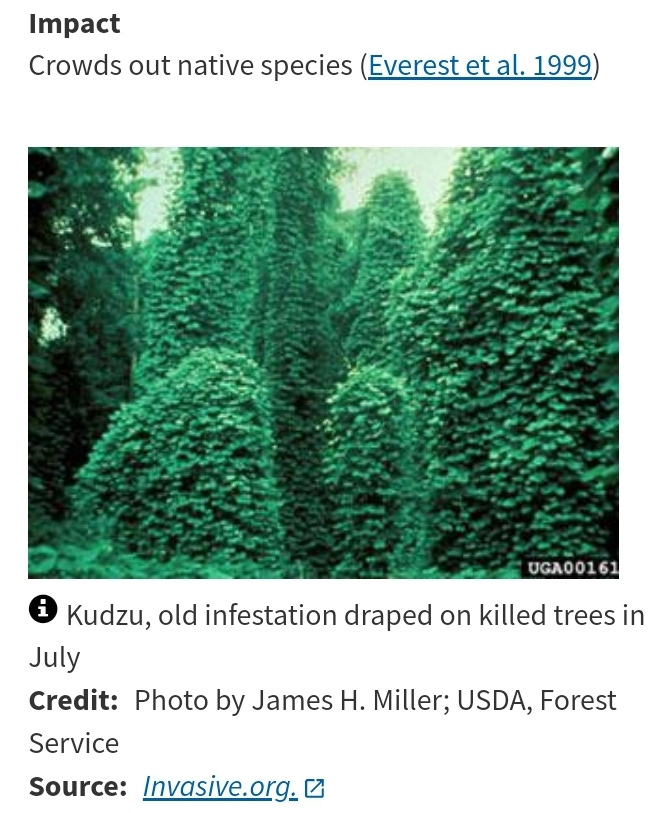
Time to start eating Kudzu… except for the seeds and seed pods, all parts of the plant are non-toxic and edible at different seasons of growth.

So, if we want to improve our BDNF levels and reduce withdrawal symptoms from benzodiazepine or alcohol, then we should take a walk in the sunshine harvesting some Kudzu root for dinner and medicinal extracts, and maybe also, pulling up some extra as an invasive plant control assistant to Mother Nature.
“The plant is a trailing vine that often grows over other plants and trees. As such, some people consider it to be an invasive weed.
For over 2,000 years, people have used kudzu root in traditional Chinese medicine for purposes like treating fevers, diarrhea, and even diabetes and heart disease (1Trusted Source).
In its raw form, kudzu root resembles other root tubers, such as potatoes or yams. It has tan skin, white flesh, and an oblong shape.
The kudzu plant resembles poison ivy, so it’s important to know how to identify it correctly.” (healthline.com)

Kudzu oxalate and salicylate content are not available on this extensive list. (oxalate/salicylate food list Pdf), no source given; nice list though. It looks like Julie Matthews special diet database of foods because GFCF and SCD status for the foods are included.
Extract of Kudzu potentially may be acting through opioid system antagonism, “influencing the opioid receptors mi and delta and the expression of opioid precursors (proopiomelanocortin), similarly to Naltrexone.” (Ozarowski, et al., 2013) Ironically.
Ironic, people dying from opioid, and a plant version of Naltrexone is covering the south with edible greens and starchy potato roots that have such medicinal benefits, kudzu root has the nickname of “longevity powder” and “Asian Ginseng”.
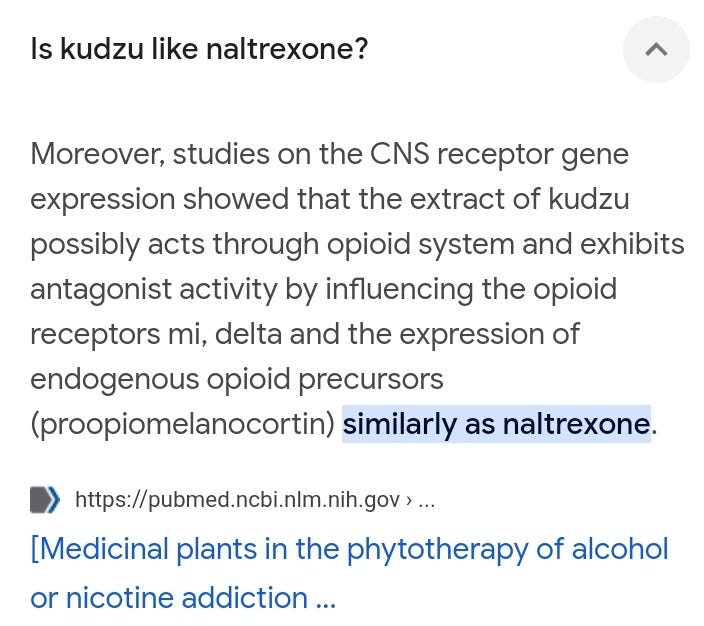
Human trials have found a reduction in beer consumption when kudzu root extract was given. Diadzin is the active phytonutrient, and the effect is similar to the anti-drinking drug Antabuse. Less was drunk with slower pace of drinking and smaller amounts consumed with a swallow. (practicalrecovery.com) That is interesting. Isoflavones may be phytonutrients that promote slower intake as they speed up the effect of alcohol within the brain. (bbc.co.uk)
Why aren't we eating this in the US instead of importing kudzu root flour from Asia as a specialty item?

Kudzu flowers hide under the canopy of leaves, so we won’t see a season with purple flowers covering hillsides and trees. They hang underneath more like the bunches of grapes which they also resemble in fragrance. They are edible with a taste more like snow peas than grapes.

Kudzu resorts - Bed and Breakfasts with a service element.
So, people who think we need more ‘black jobs’ or more jobs in general, start digging Kudzu tubers and harvesting the leaves and flowers for cooked vegetable use. The produce could be sold to local restaurants or at farm markets. People with property covered in Kudzu vine could also set up a camp-like atmosphere and have paying guests who come and help harvest the medicinal Kudzu and who get to eat medicinal meals while staying at the Kudzu Bed & Breakfast/summer camp.
The moist south is covered with Kudzu vine as brainy people planted it for erosion control - and it took off in moist and sunny areas, crowding out native plants.
Crown Vetch is an erosion control plant that won’t drown trees. It can tolerate partial shade or sun and does okay with drought, bad soil, and hillsides. (Brave AI summary) So, as the Kudzu vine is being dug up, replant the area with Crown Vetch to try to out compete the invasive (but medicinal and edible) vine.
Kudzu recipes include jelly and tea made with the flower blossoms, and green veggie dishes from the leaves, and potato like dishes made with the roots. (Brave AI summary) Bon Appetit!
Avoiding glutamate and histamine dietary sources might help avoid some negative symptoms. (Glutamate food sources, Brave Summary) (Histamine food sources, Brave summary)
Summary of benefits of kudzu for benzo withdrawal - it functions similarly to Naltrexone and may help with withdrawal from opiates, alcohol or benzodiazepines, (Ozarowski, et al., 2013), or it may help with reducing the amount of alcohol that is consumed - reducing the preference or ‘need’ for more to achieve the same level of effect. (practicalrecovery.com; bbc.co.uk)
Summary of benefits of St. John’s Wort for benzo withdrawal - it may help rebalance GABA receptor activity, which chronic use of benzodiazepines likely modified towards reduced activity.
Series on brain-derived neurotrophic factor (BDNF) which supports brain cells and promotes new growth of hippocampal brain cells - protecting us from Alzheimer’s dementia risk: (Part 1 niacin, butyrate, EGCG and BDNF) (Part 2 exercise & butyrate producing microbes) (Part 3 kynurenine pathway, tryptophan, butyrate producing microbes and peaceful thinking) (This post, Pomegranate peel, ALCAR & BDNF, Part 4)
Disclaimer This information is being shared for educational purposes within the guidelines of Fair Use and is not intended to provide individual health guidance.
Reference List
(alternativetomeds.com) https://www.alternativetomeds.com/blog/benzodiazepine-withdrawal-and-heavy-metal-toxicity/
(Ashton, 1991) https://www.dropbox.com/scl/fi/sdl5gnq0251481vg3ki0s/1-s2.0-0740547291900234-main.pdf?rlkey=2684ig5qyx26zx3xxl7ess5jr&dl=0 Pdf in my Dropbox (it works on my phone)
(bbc.co.uk) https://www.bbc.co.uk/programmes/articles/1V112xmHFxwYpvSPQHTnxgX/will-kudzu-supplement-pills-make-me-drink-less-alcohol
(Benzodiazepine Toxicity) https://www.ncbi.nlm.nih.gov/books/NBK482238/#:~:text=While%20the%20mainstay%20treatment%20of,can%20reverse%20benzodiazepine%2Dinduced%20sedation.
(Bharathi, et al., 2021) Bharathi, G., Lalitha, V., Sethumathi, P.P., Sivakumar, T., Selvi, P.P., Kavitha, M., & Kumar, R.K. (2021). Plants and their derivatives as potential source in treatment of alcohol withdrawal syndrome and other treatment strategies: A review. Annals of Phytomedicine: An International Journal. https://www.dropbox.com/scl/fi/6ws3larxvm53auzl3xs7z/APM-review.pdf?rlkey=r74kwu3jmo3tedwjzwimni8qa&dl=0
(goodrx.com) https://www.goodrx.com/well-being/supplements-herbs/st-johns-wort-interactions.
(He, et al., 2021) He H, Peng S, Song X, Jia R, Zou Y, Li L, Yin Z. Protective effect of isoflavones and triterpenoid saponins from pueraria lobata on liver diseases: A review. Food Sci Nutr. 2021 Dec 10;10(1):272-285. doi: 10.1002/fsn3.2668. PMID: 35035928; PMCID: PMC8751448. https://onlinelibrary.wiley.com/doi/10.1002/fsn3.2668
(Heo, et al., 2019) Heo HS, Han GE, Won J, Cho Y, Woo H, Lee JH. Pueraria montana var. lobata root extract inhibits photoaging on skin through Nrf2 pathway. J Microbiol Biotechnol. 2019 Apr 28;29(4):518-526. doi: 10.4014/jmb.1812.12019. PMID: 30954034. https://www.jmb.or.kr/journal/view.html?doi=10.4014/jmb.1812.12019
https://www.invasivespeciesinfo.gov/terrestrial/plants/kudzu
(jamanetwork.com) https://jamanetwork.com/journals/jama/fullarticle/197306
(Klemow, et al., 2011) Klemow KM, Bartlow A, Crawford J, et al. Medical Attributes of St. John’s Wort (Hypericum perforatum) In: Benzie IFF, Wachtel-Galor S, editors. Herbal Medicine: Biomolecular and Clinical Aspects. 2nd edition. Boca Raton (FL): CRC Press/Taylor & Francis; 2011. Chapter 11. Available from: https://www.ncbi.nlm.nih.gov/books/NBK92750/
Kudzu (civileats.com) civileats.com, https://civileats.com/2024/04/02/cooking-kudzu-the-invasive-species-is-on-the-menu-in-the-south/
(Moeller, et al., 2019) Moeller S, Sitter A, Darrelmann UG, Philipsen A, Müller HHO, Wang R, Olek A. Herbal detox - Benzodiazepine withdrawal treatment with the help of St. John's Wort? Asian J Psychiatr. 2019 Oct;45:26-27. doi: 10.1016/j.ajp.2019.08.006. Epub 2019 Aug 23. PMID: 31472310. https://pubmed.ncbi.nlm.nih.gov/31472310/
mskcc.org, https://www.mskcc.org/cancer-care/integrative-medicine/herbs/kudzu
(oxalate/salicylate food list Pdf), no source given. https://www.dropbox.com/scl/fi/tkhpxprjxqfwn4z4moggl/alph_oxstat_chart.pdf?rlkey=r438vrihh36yfn5gi04n0d7bh&dl=0 nice list though. It looks like Julie Matthews special diet database of foods because GFCF and SCD status for the foods are included.
(Ozarowski, et al., 2013) Ozarowski M, Mikołajczak PŁ, Thiem B. Rośliny lecznicze stosowane w fitoterapii uzaleinień od nikotyny lub alkoholu--implikacje dla zastosowania roślinnych kultur in vitro [Medicinal plants in the phytotherapy of alcohol or nicotine addiction. Implication for plants in vitro cultures]. Przegl Lek. 2013;70(10):869-74. Polish. PMID: 24501814. https://pubmed.ncbi.nlm.nih.gov/24501814/.
(practicalrecovery.com) https://www.practicalrecovery.com/kudzu-vine-extract-may-prove-useful-in-alcohol-treatment/.





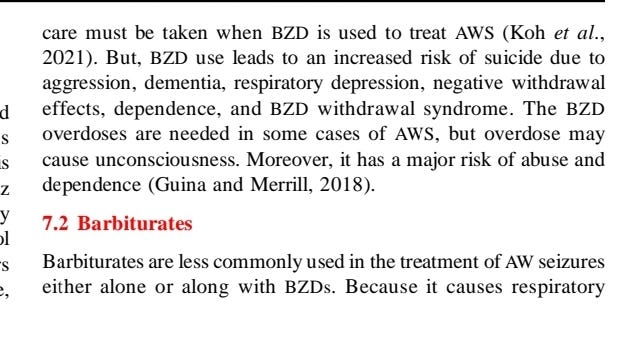

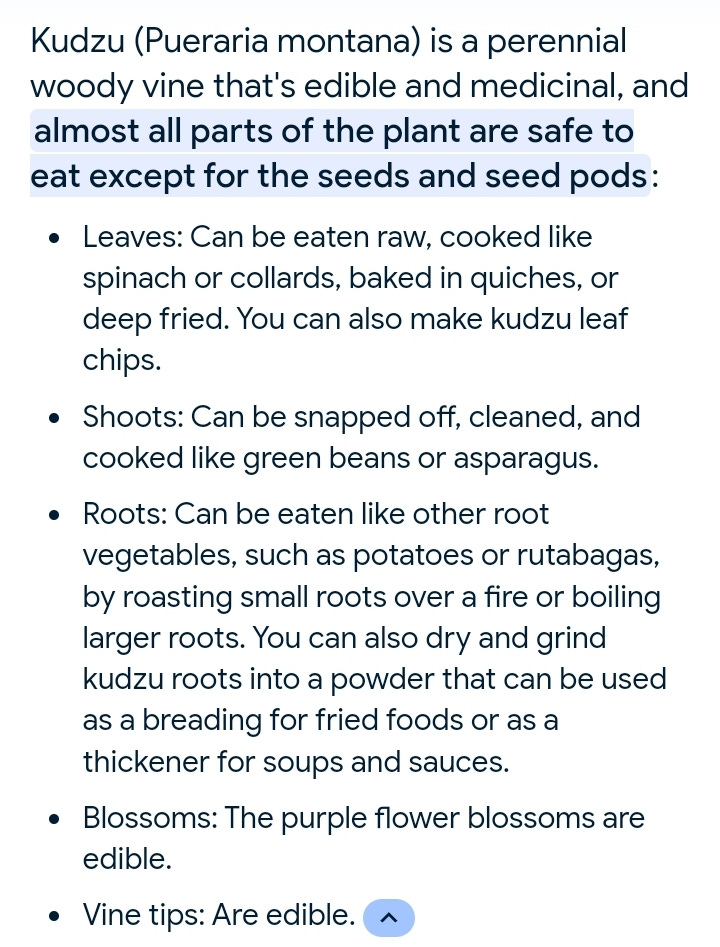
Thanks for this.
What are the potential long-term consequences of chronic benzodiazepine use on glutamate receptor function and synaptic plasticity?
Based on the search results, here are the potential long-term consequences of chronic benzodiazepine use on glutamate receptor function and synaptic plasticity:
Downregulation of BZD receptors: Chronic administration of benzodiazepines induces downregulation of BZD receptors, which may lead to:
Reduced inhibitory function of GABA, potentially desensitizing GABAergic synapses
Increased excitatory tone, as glutamate receptors (NMDA and AMPA) become more sensitive
Neuroadaptive changes: Chronic benzodiazepine use may induce neuroadaptive changes, including:
Hyperpolarization of neuron cell membranes, potentially compromising synaptic plasticity and memory formation
Reduction in synaptic plasticity, making it more difficult to form new memories
Metaplasticity: Chronic drug use, including benzodiazepines, can hijack glutamate receptor activity and long-term synaptic plasticity processes, leading to:
Long-lasting effects on neurotransmission and synaptic strength
Maladaptive changes in synaptic plasticity, contributing to durable drug memory and increased risk of relapse
Specific findings:
Chronic benzodiazepine administration alters hippocampal CA1 neuron excitability, with changes in NMDA receptor function and expression (Van Sickle et al., 2002)
Long-term potentiation and depression of glutamatergic synapses on dopamine neurons in the ventral tegmental area (VTA) are modulated by benzodiazepine agonists (Long-lasting Modulation of Glutamatergic Transmission in VTA Dopamine Neurons after a Single Dose of Benzodiazepine Agonists)
Metaplasticity-based modulation of synaptic plasticity contributes to durable neurotransmission changes in mesocorticolimbic pathways, including the ventral tegmental area and the nucleus accumbens (Glutamate receptors and metaplasticity in addiction)
In summary, chronic benzodiazepine use can lead to:
Downregulation of BZD receptors and altered GABAergic function
Neuroadaptive changes, including hyperpolarization and reduced synaptic plasticity
Metaplasticity, resulting in long-lasting effects on neurotransmission and synaptic strength
Maladaptive changes in synaptic plasticity, contributing to durable drug memory and increased risk of relapse
These findings suggest that chronic benzodiazepine use can have significant and lasting impacts on glutamate receptor function and synaptic plasticity, potentially contributing to cognitive impairment, memory deficits, and increased risk of addiction.
AI-generated answer. Please verify critical facts.
Elsevier
Neuropharmacology
neurolint-logo
Follow up
What specific subtypes of glutamate receptors are most affected by chronic benzodiazepine use?
Can chronic benzodiazepine use lead to long-term alterations in glutamate receptor trafficking and synaptic localization?
How do benzodiazepines influence the activity of other neurotransmitters, such as dopamine and serotonin, in relation to glutamate receptor function?
Context
🌐
sciencedirect.com
Chronic clonazepam administration induced benzodiazepine receptor subsensitivity - ScienceDirect
🌐
mdpi.com
Neurology International |
Love your Kudzu retreat idea! If I had any business sense....
We have plenty of Kudzu in VA.